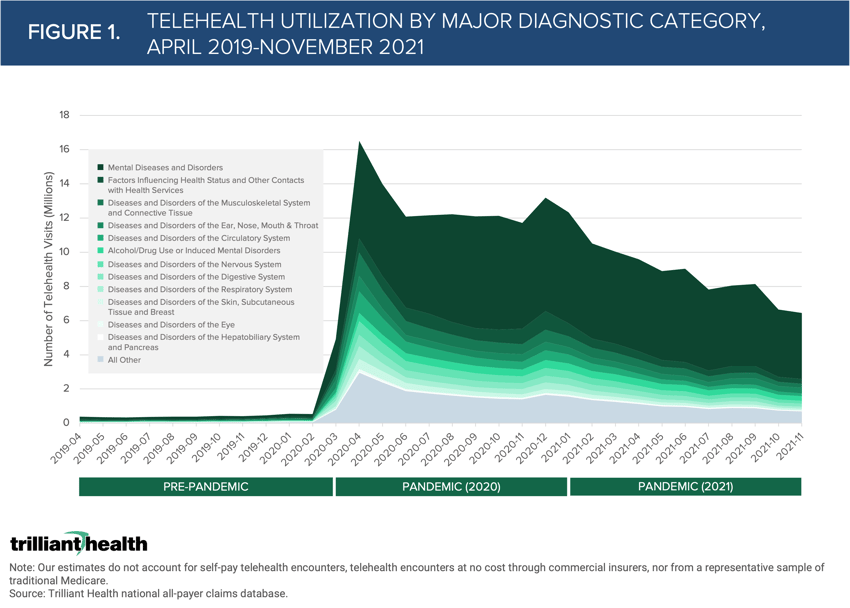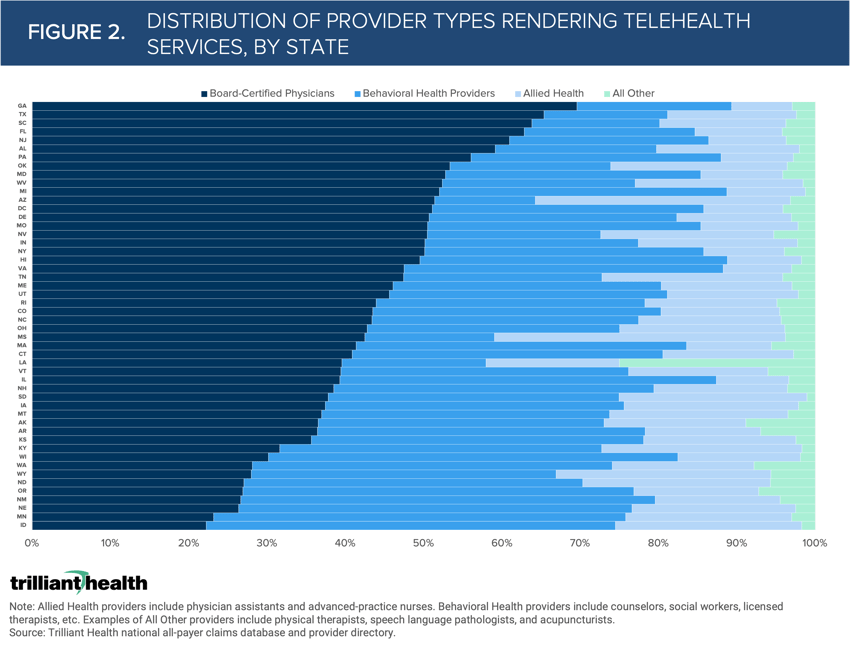The Compass
Sanjula Jain, Ph.D. | March 13, 2022Telehealth for Behavioral Health Is a Substitute From Both a Clinical and Financial Perspective
A key finding from our Telehealth Trends Report is that, according to the laws of economics, telehealth is only a “substitute good” for Behavioral Health. In other words, patients consider telehealth for Behavioral Health to be substantially similar to in-person Behavioral Health care, but not for other types of medical care (e.g., Primary Care). Other than Behavioral Health, telehealth is at best a “complementary good” that a small group of patients will use as a complement to in-person care. As a result, telehealth is unlikely to replace a substantial portion of healthcare services traditionally delivered in person.
Notably, telehealth for Behavioral Health is substitute from both a clinical and financial perspective. Clinically, telehealth has long been a substitute for in-person treatment of Behavioral Health, accounting for 57.9% of all telehealth visits in 2021 (Figure 1). While there was clear forced adoption of virtual modalities due to COVID-19 for certain visit types (e.g., Primary Care, COVID-19 testing/screening), Behavioral Health was the most common telehealth diagnosis both before and after the onset of the pandemic. Importantly, Behavioral Health visits are most common (e.g., anxiety and adjustment disorders) for Average (five to six visits), High (seven to 24 visits), and High (25 or more visits) Utilizers. The remote nature of counseling for Behavioral Health diagnoses allows for convenient, frequent provider access, and surveys suggest that many patients prefer “distance” from their providers for these types of visits.

In addition to being popular with patients, telehealth is a “substitute good” for Behavioral Health providers as well. Behavioral Health providers rarely, if ever, order ancillary healthcare services as part of an in-person visit. As a result, Behavioral Health providers are financially indifferent to an in-person visit versus a telehealth visit. In contrast, primary care providers, who routinely order labs or imaging tests in connection with an in-person visit, can never realize true payment parity by solely providing care via telehealth.
The pandemic exacerbated the nation’s Behavioral Health crisis, and telehealth is well suited to address burgeoning demand for Behavioral Health services, particularly given the inadequate supply of providers for current and projected demand for Behavioral Health services. The fact that the supply of Behavioral Health providers is inadequate even as those providers are the most common provider type billing for telehealth services in 16 states should be of concern for policymakers and employers alike (Figure 2).

The national Behavioral Health crisis, together with true payment parity, presents an opportunity for telehealth companies to cater to the population segments that currently use telehealth for Behavioral Health and those that need, but don’t access, Behavioral Health services.
Thanks to Kelly Boyce and Katie Patton for their research support.
- Virtual Care
- Behavioral Health
You are currently viewing a free preview of our premium studies. To receive new studies weekly, upgrade to Compass+ Professional.
Sign UpSee more with Compass+
You are currently viewing the free version of this study. To access the full study, subscribe to Compass+ Professional for $199 per year.
Sign Up for Compass+